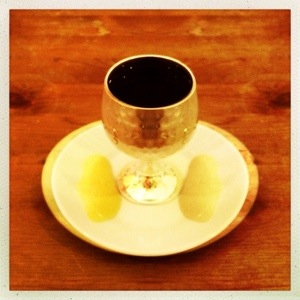This post originally appeared as part of Social and Cocktail’s ‘My Favourite Cocktail’ series.
It may seem strange, coming from a Scotch whisky enthusiast who writes under the name of House of Bourbon, that my favourite cocktail is commonly made with rye whiskey, and before that even used grain-less cognac as a base. But we dipsologists can be a contrary bunch, and as it is best to approach tipular fixing with an open-mind, I feel no compunction in announcing that my favourite cocktail is the Sazerac.
Now the Sazerac isn’t the sort of brightly coloured drink you see fooling around with sparklers and fancy fruit embellishments. In fact, in its purest form it should be served without any garnish at all. And that is the first limb of its charm. Before serving your Sazerac straight up in an unmarked glass the bartender will pause to sell you the dummy of a twist of lemon peel. After expressing the oil he will whisk it away, with suitable distain, and allow the rich flavour of the rye whiskey, Peychaud’s bitters and absinthe to have untrammelled control of your senses.
The second charm of the Sazerac is the ritual by which it is prepared. You cannot simply toss everything into a shaker, rattle to a count of thirty and strain. A Sazerac is built from the bottom up and then inverted into a pre-chilled, pre-rinsed glass (or in my preference, goblet).
Thirdly, the Sazerac has appeal because it is a survivor. It has faced some tough times in the 150 years or so of its life. First came the phylloxera epidemic that devastated northern Europe’s wine crops in the 1870s (so cognac became rye). Then, in 1912, came the US ban on absinthe (so absinthe became Herbsaint). Then came Prohibition (and the drink withered, or at least all the ingredients apart from the sugar cube and the lemon peel were likely made in an old bathtub). Finally, after the blessed relief of the 21st Amendment, Sazerac aficionados noticed with despair that most of the USA’s rye distilleries had not survived the great drought and so the rye became bourbon.
After a history as complicated as this, it is no small miracle that the complex Sazerac, now back to its purest 1850 recipe has survived, nay flourished, and that can be put down to the fourth inherent and most profound joy of the drink: the combination of the butch, spiced notes of rye tempered with the sweet, cinnamon of the absinthe and bitters. A bracing, complex marriage enhanced by the markedly apparent suggestion of fresh lemon, all contained in the mysteriously rich red-brown tipular.
Fix the House of Bourbon Sazerac as follows:
- Fill an old fashioned glass with ice and leave it to stand.
- In a second old fashioned glass muddle a sugar cube and five dashes of Peychaud’s bitters.
- Add a large measure of rye whiskey and a handful of ice cubes to the sugar and bitters solution and stir well.
- Discard the ice in the first glass and rinse it with a teaspoon or so of absinthe until the inside is coated.
- Strain the whiskey, sugar and bitters into the absinthe-rinsed glass.
- Garnish with the oil from a twist of lemon and discard the peel.









